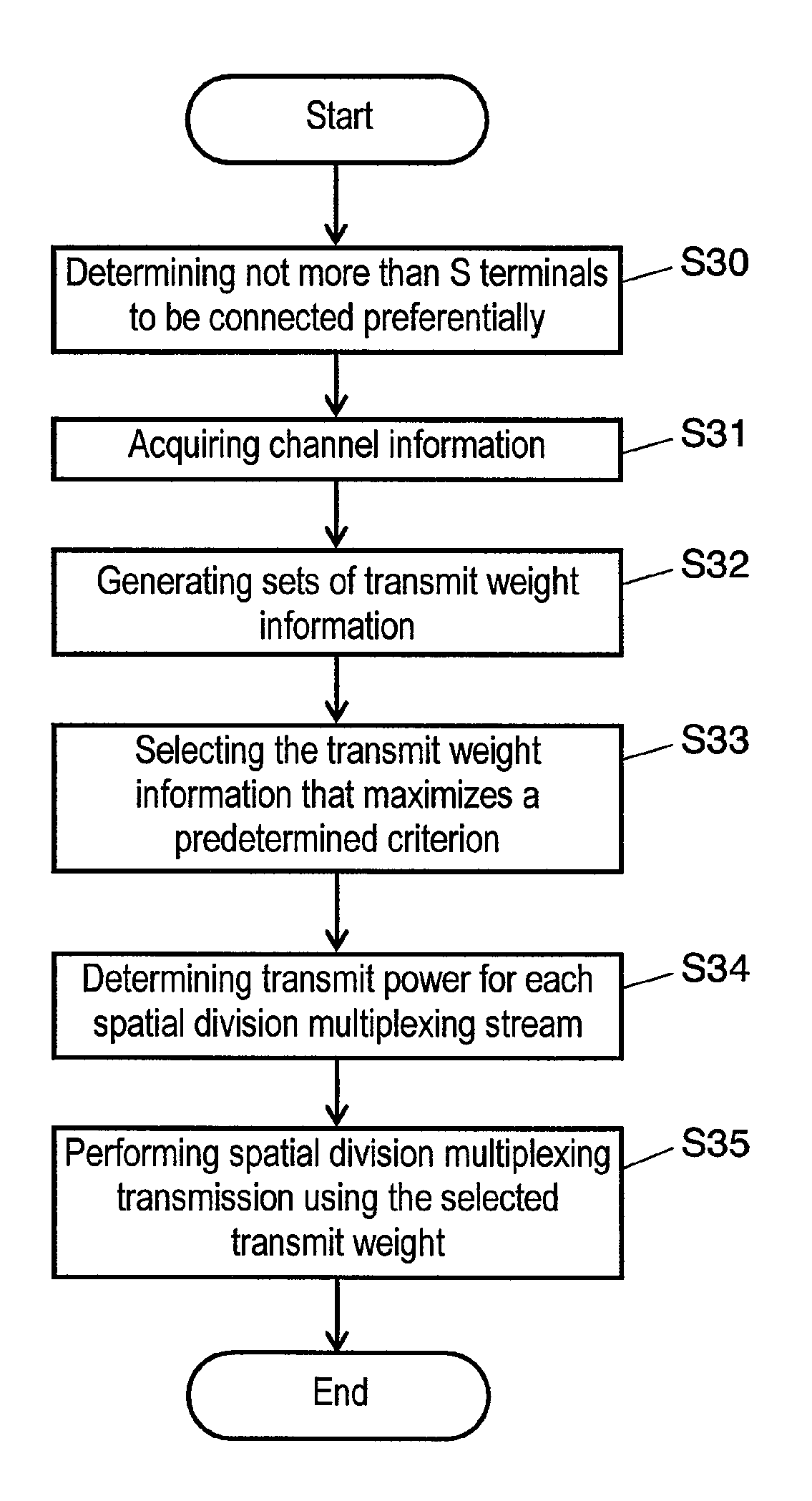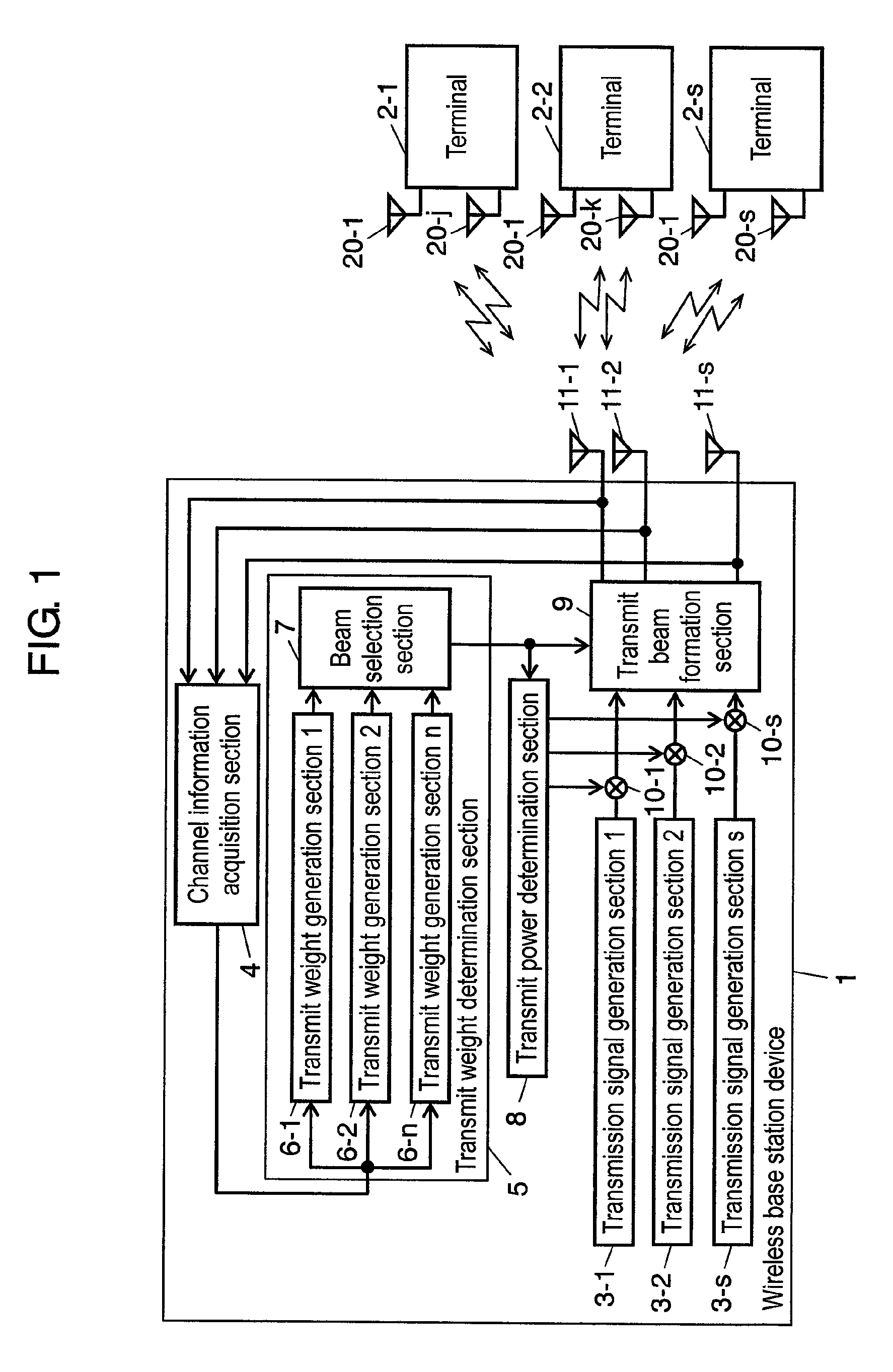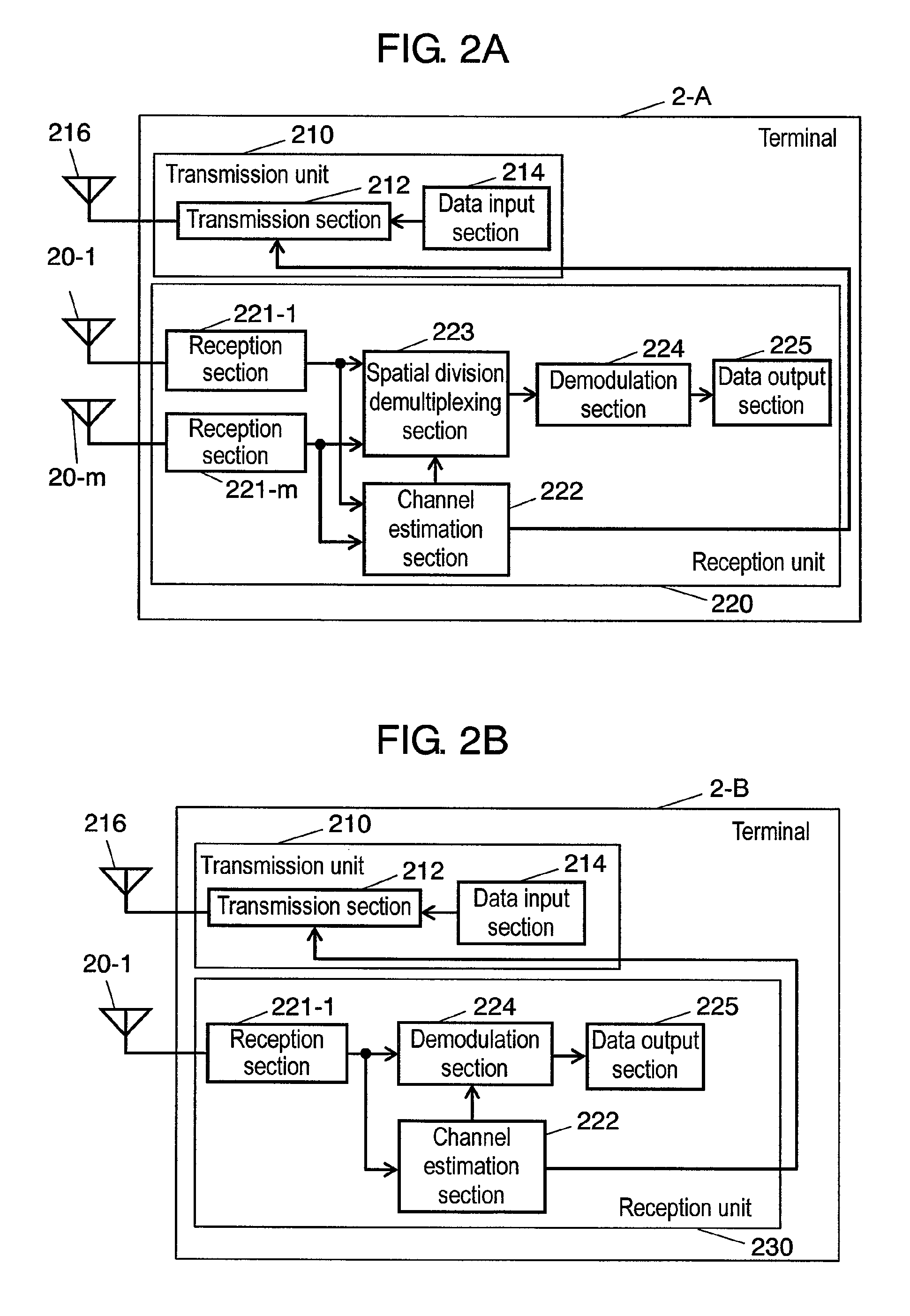Wireless base station device, terminal, and wireless communication method
a wireless base station and terminal technology, applied in the field of wireless base station devices, terminals, wireless communication methods, can solve the problems of increasing the processing delay associated with them, and achieve the effects of reducing the processing time required to control the spatial division multiplexing transmission, simplifying the allocation process, and simplifying the wireless base station devi
- Summary
- Abstract
- Description
- Claims
- Application Information
AI Technical Summary
Benefits of technology
Problems solved by technology
Method used
Image
Examples
first embodiment
[0053]The structure of a wireless base station device and terminals of a first embodiment of the present invention is shown in FIG. 1. In FIG. 1, terminals 2-1 to 2-s each have antennas 20-1 to 20-j, 20-1 to 20-k, and 20-1 to 20-s, respectively, but may each have only one antenna. FIGS. 2A and 2B show detailed diagrams of a terminal having a plurality of antennas and a terminal having a single antenna, respectively, on the receiving side.
[0054]FIG. 1 is a diagram of wireless base station device 1 and terminals 2-1 to 2-s according to the first embodiment of the present invention. The following description of the present embodiment assumes a case where wireless base station device 1 transmits “Ns” spatial streams to “s” terminals where Ns≧s and Ns is a natural number. The transmission from wireless base station device 1 to terminals 2-1 to 2-s is hereinafter referred to as “downlink”.
[0055]In FIG. 1, wireless base station device 1 of the first embodiment of the present invention incl...
second embodiment
[0234]Wireless base station device 100 of a second embodiment of the present invention is shown in FIG. 11.
[0235]Wireless base station device 100 differs from wireless base station device 1 of the first embodiment in that there is provided selector switch section 107-a instead of beam selection section 7 and there is further provided selector switch section 107-b between channel information acquisition section 4 and transmit weight generation sections 6-1 to 6-n. From a functional point of view, device 100 differs from device 1 in that channel information acquisition section 4 has not only the conventional function of extracting channel information but also the function of controlling selector switch sections so as to select the optimum transmit weight generation section 6 based on the extracted channel information.
[0236]On the other hand, selector switch sections 107-a and 107-b are associated with each other. For example, when selector switch section 107-b selects transmit weight ...
third embodiment
[0248]Wireless base station device 1-A and terminal 2-C of a third embodiment of the present invention are shown in FIG. 12 and FIG. 13, respectively. Wireless base station device 1-A of the present embodiment differs from wireless base station device 1 of the first embodiment in that there are provided separation algorithm acquisition section 400 and beam selection section 401. Separation algorithm information acquisition section 400 acquires spatial division demultiplexing algorithm information transmitted from terminal 2-C. Beam selection section 401 selects one of the outputs of transmit weight generation sections 6-1 to 6-n based on the spatial division demultiplexing algorithm information. Terminal 2-C of the present embodiment differs from terminal 2-A of the first embodiment in that terminal 2-C includes spatial division demultiplexing algorithm storage section 300 and transmission section 212-A. Spatial division demultiplexing algorithm storage section 300 stores spatial di...
PUM
 Login to View More
Login to View More Abstract
Description
Claims
Application Information
 Login to View More
Login to View More - R&D
- Intellectual Property
- Life Sciences
- Materials
- Tech Scout
- Unparalleled Data Quality
- Higher Quality Content
- 60% Fewer Hallucinations
Browse by: Latest US Patents, China's latest patents, Technical Efficacy Thesaurus, Application Domain, Technology Topic, Popular Technical Reports.
© 2025 PatSnap. All rights reserved.Legal|Privacy policy|Modern Slavery Act Transparency Statement|Sitemap|About US| Contact US: help@patsnap.com



